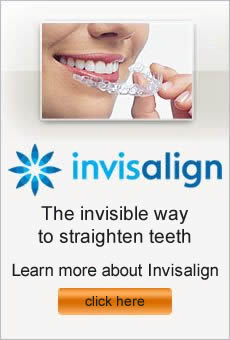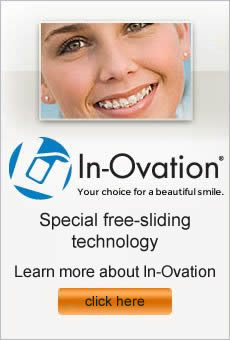One of the best ways to achieve a perfect smile is by wearing braces, but it doesn’t come without a few hassles. Once you see your issues like overcrowded teeth, gaps, bite misalignment, and more are gone, the end result is worth it. In the meantime, look for the bright side of wearing braces!
Follow these guidelines for making your time in braces as successful as possible.
Don’t stress out about the initial part of the process when the orthodontist makes molds of your teeth. Some patients hate this part and worry about gagging. Most people have the same reaction, so don’t feel self-conscious about it. Avoid eating right before your appointment so that food will be less likely to come up. Brush your teeth well before and after the appointment.
Your orthodontist will provide a list of foods that you shouldn’t eat while you’re in braces. Remember that you won’t be without your popcorn or favorite candy forever; it’ll be worth the wait when you get to eat those treats again using your perfectly straight teeth! Look at the restrictions as a chance to try different foods and maybe even eat a little healthier.
Speaking of foods, indulge in your favorite cold treats after your appointments to get your braces adjusted or tightened. Sure, it’s uncomfortable, but having a yummy milkshake or ice cream cone will help ease the pain. Braces provide a great excuse for a trip to the ice cream shop.
If fashion is your thing, have fun with the elastics that go with your braces if your treatment involves them. Orthodontists offer a variety of color choices, so express your style when selecting your elastics. Every month can be a new adventure for your smile.
It may be a bummer to wear braces for a couple of years, but you can improve the experience by making the most of it. Keep your mind focused on how happy you’ll be in the end.

Here at Dr. Mehdi Fotovat’s practice, our team believes that giving is caring. That’s why we invite patients, parents, and the entire community to enter our Give & Get Sweepstakes! Do good and feel good all at the same time. Everyone’s invited to have the chance of winning a…
$500 Shopping Spree & a $500 Donation to Your Favorite Charity!
Entering is easy. Simply click the link below and fill out the entry form for your chance to win. And that’s not all- share the sweepstakes with friends on Facebook and you’ll receive 3 bonus entries for every friend that enters through your link.
Click HERE to ENTER!

The most common treatment method for straightening teeth and correcting bites has been braces for many years. However, new types of braces have been developed as technology has advanced. One example is lingual braces, sometimes also referred to as incognito braces.
Like traditional braces, lingual braces are made of metal. There is one major difference from braces that have been available for a long time; lingual braces are fitted on the inside of your teeth instead of the outside. This provides the benefits of braces without the embarrassment of visible metal braces.
Many patients are candidates for lingual braces, although they might be considered most popular among adults who especially want to hide the fact that they are undergoing orthodontic treatment at a later age. A consultation with an orthodontist is necessary to determine if you are a good candidate, or if a different option might be more effective.
Braces that require wires and brackets on your teeth have a reputation for causing discomfort. Lingual braces are no different, and in fact, they tend to be a bit more uncomfortable due to their placement on the inside of your teeth. It feels somewhat unnatural having the metal inside your mouth where your tongue brushes against it often. For the first week or so, your tongue may feel a little sore as you get used to it having to share space with the braces.
Talking and eating may be awkward after you initially get lingual braces. A slight lisp or whistling sound is common when speaking at first, but disappears as you grow accustomed to the braces. The same goes for eating, as you’ll get used to how the braces fit in your mouth.
Because of their location, lingual braces are difficult to clean. Food tends to get stuck in the braces and it’s hard to remove, especially since you can’t see behind your teeth well. It’s hard to know how dirty or clean your braces and teeth are. Regular brushing and flossing is key to maintaining good oral health while wearing lingual braces.
If achieving the perfect smile while hiding treatment is important to you, talk to an orthodontist about the possibility of lingual braces.
Wearing braces on your teeth is a step toward improving your appearance and self-esteem for the rest of your life. A straight, appealing smile is the goal, but you must care for your braces and follow your orthodontist’s instructions during treatment to achieve that goal.
Follow these tips for a successful braces journey.
Not surprisingly, you must properly and consistently perform oral hygiene tasks. Your teeth are even more susceptible to plaque buildup and bacteria attacks when you’re wearing braces. Food can easily become trapped in the wires and brackets, and it can be difficult to remove debris. Try to carry a soft-bristled toothbrush with you so that you can stop by the bathroom after eating to clean your braces and teeth. Always rinse thoroughly with water to dislodge food, and brush gently from various angles.
Even though it can be tricky, don’t neglect flossing. Thread the floss between your teeth and wires, and gently work the floss between the braces and teeth. Try using a threader available at drugstores to insert the floss more easily. Your orthodontist may also recommend rinsing with mouthwash daily to fight bacteria.
Always stick to the diet that your orthodontist provides. Do not eat the foods that are known to damage braces, such as popcorn or hard candies or sticky caramel. Items on the list are common culprits for breaking your brackets or wires. It’s best to consider every food before you eat it so that you avoid items that may damage your braces. In some cases, you can simply cut the food into smaller pieces and still be able to eat it.
You may also be warned against consuming too many starchy or sugary foods and drinks, which promote decay and gum disease. Also, break potentially harmful habits like chewing ice or knawing on pencils. Another way to protect your braces is to wear a mouth guard when engaging in sports or other physical activities. A customized mouth guard is the best option for protecting your smile.
Following these guidelines will help your teeth remain clean and healthy while undergoing treatment, so that your smile is in tip-top shape when the braces are removed.
The best way to determine if an orthodontic treatment plan is right for you is to visit a qualified professional for a consultation. However, it’s also smart to go into the office with some knowledge about the options and questions that you might have. Being well-informed puts you on the road to a successful experience. If you’re wondering about Invisalign treatment, here are some common questions and answers about this method.
How does Invisalign work?
Unique 3D computer technology is used to create a treatment plan from the initial teeth position to the final desired position. Clear plastic aligners are developed based on the imaging in sets to be worn from the start of treatment and changed every couple of weeks to new sets as treatment progresses. This process gradually moves the teeth into better positions.
Who is a good candidate for Invisalign?
Most adults and teens are eligible for treatment, with the exception of those who still have too many baby teeth or are awaiting the eruption of second molars. Invisalign addresses most orthodontic issues, although a professional consultation is the best way to find out if it’s right for you.
What type of doctor should I see?
Special training is required to become an authorized Invisalign provider, as well as ongoing training classes to maintain the designation of “Preferred Provider.” This status may be achieved by a dentist or an orthodontist, so just look for a provider with the required Invisalign training.
Does Invisalign hurt?
The pain associated with traditional orthodontics does not occur with Invisalign, mainly because there are no wires involved. You may experience slight discomfort as you adjust to each new set of aligners, but it dissipates quickly and is not severe.
How will Invisalign affect my everyday life?
Since the aligners are removeable for eating and cleaning, you can stick to your regular diet and oral hygiene. Fewer appointments are required than with traditional braces, so you won’t even be giving up your time to sit in the dental chair. Your daily life will hardly be affected during Invisalign treatment.
Crooked teeth or a misaligned bite can make even the most confident person self-conscious. No matter your age, Invisalign orthodontic treatment can repair your smile without the sometimes annoying and embarrassing characteristics of traditional braces. This revolutionary method provides a hassle-free orthodontic experience that gives you the same end results as you might achieve with other techniques.
Appearance
Perhaps the most well-known characteristic of Invisalign is the fact that they are nearly invisible. The clear plastic aligners are transparent when worn over your teeth, so that others likely won’t even realize you’re wearing them. Your teeth may appear shiny or glossy, but that just provides a polished look without giving away the secret that you’re undergoing orthodontic treatment.
Flexibility
The removeable aligners give you the freedom to take them in and out as you please. They should always be removed while eating and cleaning, but can also be taken out as desired. However, it’s important to remember that the trays should be worn at least 20 hours a day for ideal results.
Comfort
Invisalign is probably the most comfortable orthodontic solution available. The trays are customized so that they fit comfortably, and movement is gradual so that you don’t experience significant discomfort like is common with traditional orthodontic adjustments.
Maintenance
The trays should be removed for regular cleaning, which is simple using a regular toothbrush and non-abrasive toothpaste. When the trays are out of your mouth, normal dental hygiene tasks of brushing and flossing your teeth are advised. It’s easy to maintain good oral health without having to work around cumbersome appliances.
Personalization
The process for Invisalign involves creating customized trays to fit your mouth structure perfectly. The aligners are replaced with new sets at regular intervals, usually about every two weeks, as your progress continues. Your progress can be monitored using special computer software so you can actually see your smile improve and the expected end results.




